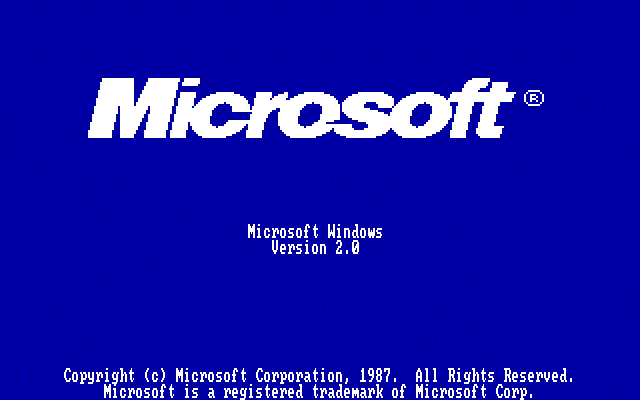The Microsoft Windows History
The History of Microsoft Windows
In 1981, Microsoft founders Bill Gates and Paul Allen bridged the gap between computer hardware and software with the introduction of the operating system MS-DOS. While the system's efficacy for business and consumer alike proved innovative, it also required many improvements to be made in the name of comprehensibility and ease of access.
Windows 1.0
Such needs pushed Gates and Allen to announce the Microsoft Windows platform in 1983. Two years later, the company released Microsoft Windows 1.0, which, while not entirely ameliorating the shortcomings of its predecessor, still worked to patch its inherent problems by rendering programs easier to use and introduced a slew of features and programs, such as file management, Notepad, a word processor, a calendar, a clock, and drop-down menus, icons, scroll bars and dialog boxes, among others. These features laid the groundwork for the structure of future Windows operating systems to come.
Windows 2.0
Late 1987 saw the release of Windows 2.0, which allowed for desktop icons and included the programs Microsoft Excel, Word for Windows, as well as the Control Panel feature. Microsoft's willingness to cultivate a user-friendly personal computer experience and improve the speed and reliability of their operating system drastically increased their success in the market. Just a year after the release of Windows 2.0, Microsoft became the best-selling, most popular PC software company in the world.
Windows 3.0 and 3.1
Windows 3.0, released in May 1990, improved program capabilities, and, with the introduction of virtual memory into the equation, allowed users to better multi-task older software that had theretofore remained relatively unwieldy. At this point, Windows began to look like the operating system with which the vast majority of us have familiarized ourselves. However, while 3.0 was considered a great success for Microsoft, 3.1, released in 1992, came to be much more widely used, due to its improvements upon already innovated aspects given in 3.0.
Windows 95
Windows 95, released in the selfsame year, sold seven million copies in its first 5 weeks on the market. With the capacity to run in 12 languages and integrated networking now a possibility, Windows 95 ushered in the age of the internet. Dial-up networking and internet support came pre-packaged. Web design was no longer a faint dream for the layman. Quaint, quotidian functions of personal computing like minimize, maximize, and close buttons, as well as the Start Menu first appeared. That summer, Microsoft released the first version of Internet Explorer
.
Windows 98, Windows ME, Windows XP, Windows Vista
Windows 98, the first strictly consumer-oriented platform, improved the user's search capabilities. Two years later, Microsoft released Windows Me. While it markedly improved multimedia accessibility, it quickly fell under the shadow of Windows XP's release a year later. XP proved to be Microsoft's last major operating system innovation for another six years, when Windows Vista was released to the general public in 2007. Vista's sleek interface indicated the way of the future.
Windows 7 and Windows 8
Finally, Windows 7, released in late 2009, improved further upon XP and Vista's bugs, and refined graphics, speed and usability; and the announcement of Windows 8's imminent release is surely an exciting prospect. Additionally, in the 16 years between Internet Explorer's original incarnation and its current one, much has been done to alleviate its buggy nature and inaccessibility for user web design. Such concern for a user-friendly experience in just one program serves as microcosm for the larger enterprise that is Microsoft and its long line of operating systems.


About the Author:
Web Design in Ireland, contact Textbook Web Design for a free quote.
















No comments: